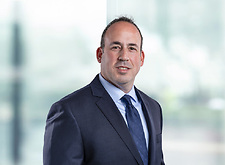New York Adopts Nitrogen Oxide Emissions Rule Aimed at Mitigating Peaker Plant Emissions and Boosting Energy Storage
The New York State Department of Environmental Conservation (DEC) recently adopted a final rule reducing the allowable level of nitrogen oxide (NOx) emissions during the higher ozone level season. This rule imposes new and tougher requirements on peaking power plants, or “peakers,” so named because they generally run at times of “peak” energy use, particularly in the summer – though as the State and New York City move aggressively to beneficially electrify broad swaths of the transportation and building sectors, peak electricity use may shift in coming years.
The older gas-fired peaker plants targeted by the rule can generate more than a third of the state's daily power plant NOx emissions when operating. Thus state officials tout the public health benefits of the new rule and its necessity in helping the State meet ozone national ambient air quality standards. This rule further speeds the State’s progress toward transitioning the function served by peak-use power plants to energy storage resources. That process is already underway, with the approval of a 316-megawatt energy storage facility to be built on a portion of the Ravenswood Generating Station in Long Island City currently occupied in part by peaker units. [1] The rule does so through an option to incorporate electric storage resources and/or renewable generation resources into the older facilities, or within one-half mile of the peaker facility, to achieve compliance.
The provisions contained in 6 NYCRR Subpart 227-3 only apply to owners and operators of simple cycle and regenerative combustion turbines (SCCTs) and only during the ozone season – roughly the summer cooling season – which runs from May 1 through September 30 of each year.
The following topics are addressed in the new rule:
Applicability
The new rule applies to “owners and operators of simple cycle and regenerative turbines (SCCTs) that are electric generating units with a nameplate capacity of 15 megawatts (MW) or greater and that inject power into the transmission or distribution systems.”
This rule does not apply to “black start resources,” which are defined as “electric generating unit used to bring a facility from shutdown to operational without reliance on external supplies or the electrical system.” Additional SCCTs designated as a reliability source by the NYISO or local transmission/distribution owner may be permitted to operate temporarily without complying with the new rules.
Permitting requirements and compliance plan submittal
Each peak-use power plant containing an SCCT is required to have or obtain an operating permit that incorporates implementation of a compliance plan prior to May 1, 2023. Absent such a permit, the plant will not be allowed to operate on or after the compliance date.
A compliance plan must be submitted to the DEC by each facility having an SCCT by March 2, 2020. Because the DEC expects the NYISO to use the submitted plans as part of its 2020 Reliability Needs Assessment, it is not permitting amendments of the submittals. Thus, affected operators have less than two months to put their plans – including storage and renewable generation options discussed below – into place. Compliance plans must contain the following information:
- a list of each SCCT subject to the rule;
- a schedule describing how the owner or operator will comply with the reduced NOx emissions levels
- a list of renewable and/or energy storage resources to be installed, if such resources are part of the compliance option (discussed below)
- a letter, which may be submitted as part of the compliance plan or permit modification application, affirming that “bidding or dispatch rights have been provided to the entity asserting common control.”
Control Requirements
By May 1, 2023, all applicable SCCTs must emit less than 15% oxygen on a parts per million dry volume basis (ppmvd). By May 1, 2025, the limit is 25 ppmvd for gaseous fuels and 42 ppmvd for distillate oil or other liquid fuel. To assure compliance, permittees must either conduct stack tests at least once per permit term, or install a continuous monitoring emission system that complies with DEC rules.
Compliance options
The new rule offers two options for compliance to facilities that cannot meet the facility-level daily weighted average emission limits on a pounds of NOx per megawatt hour (lb/MWh) basis. First, “ozone season stop,” which allows an owner or operator of an applicable SCCT to choose simply to cease operation during ozone season. Where the “ozone season stop” option is chosen, that choice must be indicated in any final permit or permit modification issued prior to the rule’s applicable compliance dates.
Alternatively, the owner or operator may use energy storage resources and/or renewable generation resources at the facility or within one-half mile instead of the traditional NOx-emitting sources. Such sources must be listed in the compliance plan and under the common control of the SCCT permit holder. A number of commenters – including the Long Island Power Authority – criticized the one-half mile provision, stating that as long as the alternative resource were connected to a circuit or substation that is electrically proximate to the SCCT substation as certified by the NYISO or the local distribution system operator, it should be eligible. The DEC simply stated, without further explanation, that it believed the rule as proposed was the best balance of the issues.
Testing, monitoring and reporting requirements
On a daily basis, each owner or operator of a SCCT must measure or monitor NOx emissions and report that data as part of an annual compliance report filed with the DEC. If emissions exceed the designated levels, the facility owner or operator is required to compile and maintain records of exceedances and, in each instance, notify the DEC as soon as possible and in no case more than two working days after becoming aware of an exceedance.
To learn more about the new emissions rules or for assistance in preparing compliance plans, please contact a member of Hodgson Russ’s Environmental Practice at /practices-environment-energy.html.
To learn more about Hodgson Russ’s Renewable Energy Practice and this rule’s implications for the build-out of energy storage services on Long Island and elsewhere, please contact a member of the our Renewable Practice at /practices-renewable-energy.html.
[1] PSC Approved Ravenswood Energy Storage Project
Featured
- Partner
- Partner
- Partner
- Partner
- Partner
- Partner
- Partner
- Senior Associate
- Partner
- Co-Chair of the Firm, Partner
- Partner











